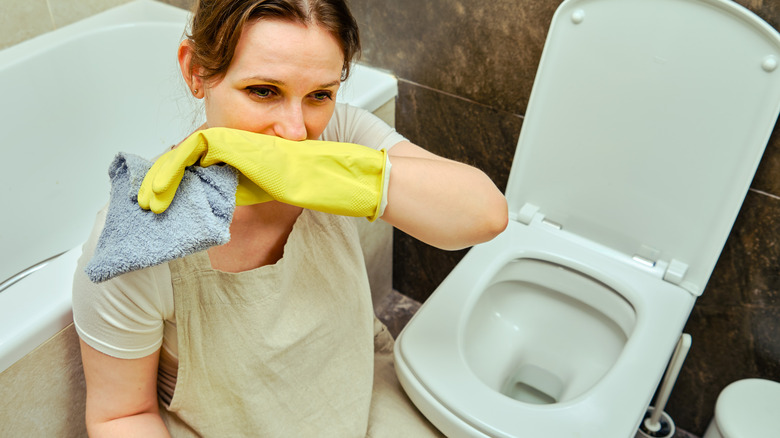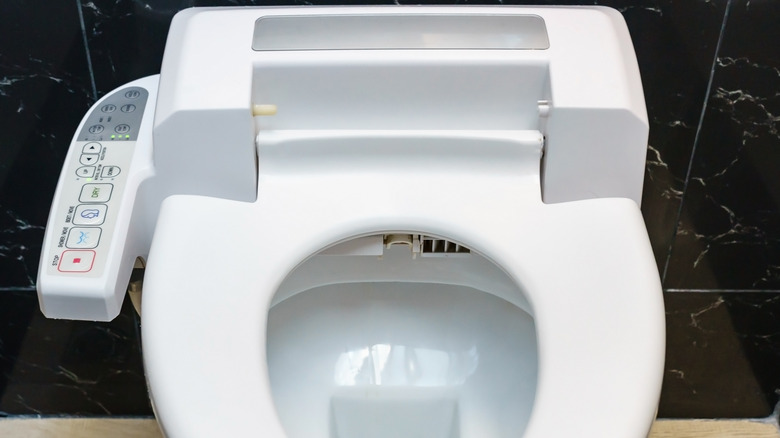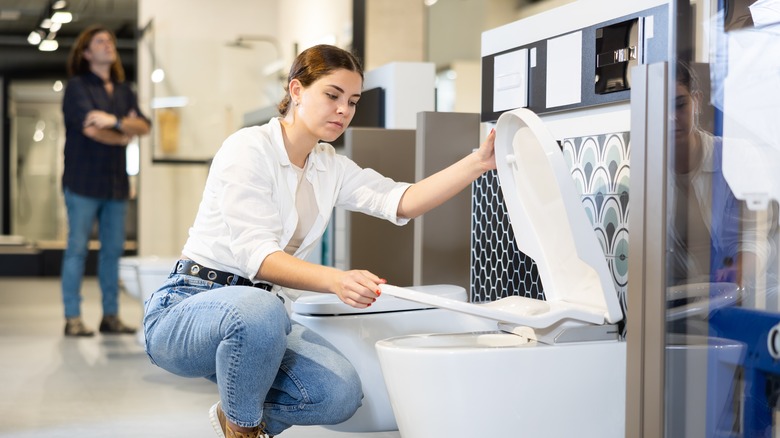Deodorizing Toilet Seats: What Are They, And Can They Really Combat Bad Smells?
We may receive a commission on purchases made from links.
If you're concerned about smells wafting from your toilet into the rest of your home, you may have considered a deodorizing toilet seat. It's more likely, however, that you've never even heard of one, which is unsurprising considering they're only just coming to prominence here in the U.S. In fact, the odor-eating lavatory is far from a new invention. A company called Sy-Clo capitalized on the fear of so-called sewer gases in the early 1900s by inventing a toilet with a built-in sanitization system. In fact, the chemicals they used did nothing of the sort — they just deodorized the bowl. Dozens of patents for deodorizing toilet accessories stretch back to the early 20th century. And in Japan, a land where the smart toilet reigns supreme, smell-containing toilets have been the norm since the 1980s.
What makes these bathroom accessories deodorizing is the addition of a carbon filter and air freshener fitted somewhere in the seat — typically in the hinge or inserted into one side. A small fan helps air flow over the filters or sucks air into them, automatically refreshing the air in and around the toilet. Deodorizing functions are also sometimes part of a bidet, a type of toilet seat that cleans your nether regions with an automated squirt of warm water while also providing other functions like heated toilet seats, air-drying, disinfection, self-cleaning, automatic seat lifting and closing, anti-slip seats, LED nightlights, and of course, deodorizing. So why don't you have one in your bathroom already?
The good and the bad
Popular brands that sell deodorizing toilets also sell scent and air filter refills. Choose from a range of scents to best suit your nostril's discerning palate, and expect to replace them every six months. Most smart seats are battery-powered, making replacing them a simple switch job. The toilet seats come in two designs — round-fronted or elongated — to suit most existing bowls. Best of all, they don't require special installation, meaning you may even be able to do it yourself. Of course, if you don't have the right tools or don't feel up to it, call in a plumber.
Of course, having to buy refills, even if it's only every six months, adds yet another line item to your budget. And remember, deodorizing doesn't mean self-cleaning (though some deodorizing toilet seats have this function, too). That means you'll still have to purchase your regular cleaning supplies, minus, perhaps, the bathroom air freshener. While the charcoal filters are harmless, there are some health concerns related to improper handling of the fragrance deodorizers. People deliberately sniffing these sachets may contract a serious condition health professionals have dubbed "toilet cake" encephalopathy. Likewise, accidental touching, ingestion, or direct inhalation — by, say, pets or small children — could result in everything from minor irritation to headache to burns. If you're storing spare refills in the house, keep them safely locked away; dispose of used cartridges responsibly, too.
Where to get one
American Standard makes the Advanced Clean® 1.0 Electric SpaLet® Bidet Seat with a bad-smell-killing charcoal filter, going for $365.30. Those with bougie bathroom tastes can consider buying their ultra-high-end Swash Thinline T22 Bidet Toilet Seat by Brondell, also with a refillable charcoal filter, for $1,632.00. If you're looking for cheaper options, Wayfair has a Kohler Purefresh™ deodorizing elongated toilet seat with an LED nightlight (bonus!) for $80.00 at the time of publication. If you want your deodorization to come alongside other nifty bottom-friendly features like cleaning, drying, and even remote control functions, consider the highly rated BidetMate 2000 Series seat selling for $429.99 on sale on Amazon.
When it comes to replacing your toilet seat, in most cases, you can do it yourself. Follow the same instructions as you would for a regular toilet seat or self-contained bidet seat installation. You need to first detach your old seat by unscrewing the bolts in the toilet. Your new deodorizing toilet seat has similar bolts — reverse the removal process to attach the new seat. If you're installing a bidet seat, you'll also need it to water; shut off your water supply before you begin. There's one extra step you may need to add to your toilet cleaning routine. Remove the deodorizing filter cages (take out the refill cartridges), clean them with a small brush (a toothbrush gets into the crevices), rinse under clean water, and air dry them before putting them back into the seat.


